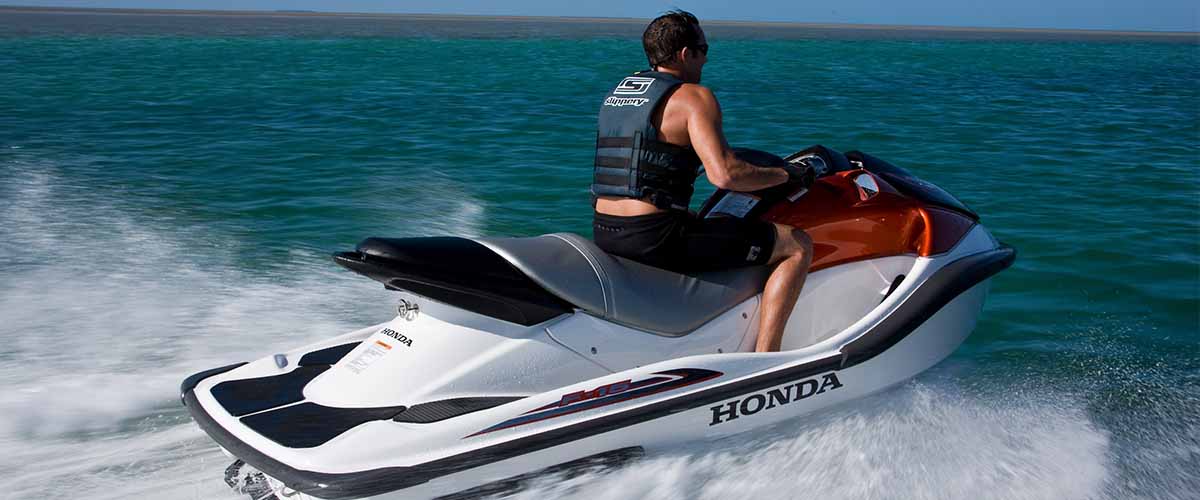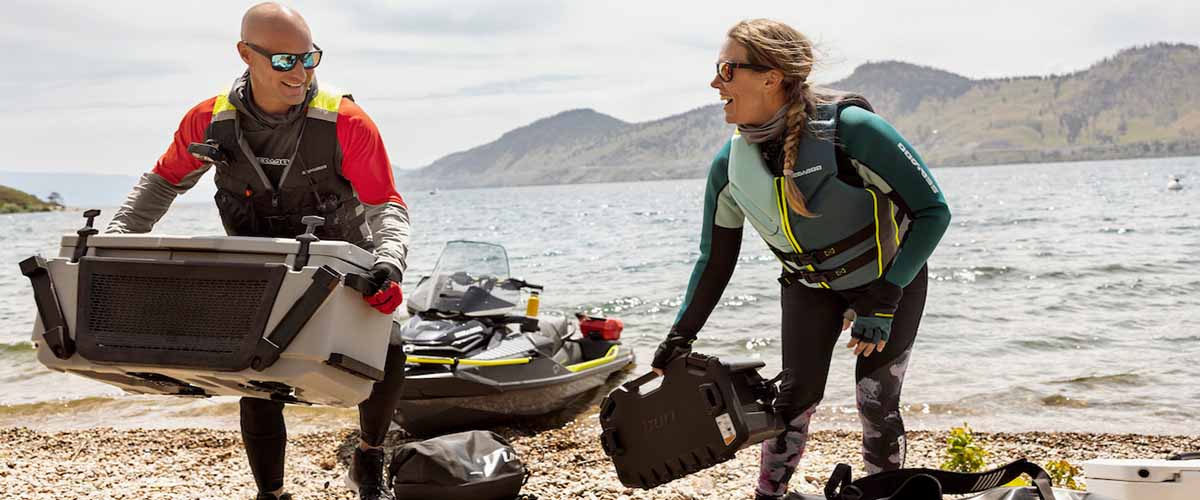Jet Ski After-Ride Care: The Most Important Steps To Take [Video]
Jet skiing is great fun, but owning one doesn’t only involve playful rides on the water.
Just like the pre-ride check, after-ride care is one of the most important regular maintenance duties; thus you should perform after-care each day you’ve used your jet ski.
If you overlook these steps, it can damage your jet ski in many ways!
For your convenience, we at JetDrift have gathered some general steps you should take after your ride, but as every jet ski model is different, it’s imperative to check your owner’s manual for model-specific instructions.
Now, without further ado, let’s see how general jet ski after-ride care looks!
Jet Ski After-Ride Care
Never leave the jet ski in the water
Jet skis are definitely not designed to be stored in the water.
That’s why every manufacturer recommends removing your ski from the water each day. If it’s unavoidable, you can leave it in the water for a day or two, but keep in mind that there are always some risks if you leave your jet ski unsupervised!
If you want to keep your craft close to the water and don’t want to put it back on its trailer every day, you can consider a jet ski lift or even a drive-on floating jet ski dock.
But it’s also not uncommon to store skis on a boat’s swim platform!
Prepare for trailering
If you have to tow your jet ski after your ride, don’t forget to take the necessary steps. First, make sure your jet ski sits properly on the bunks, and secure the straps properly.
Beyond the ski, you can also check the trailer as well as your accessories to make sure all of them are with you. Also, don’t forget to hook the lights back on, and check the safety chain to see if it’s properly rigged.
It also never hurts to test the brakes of the trailer carefully before you start to tow it at higher speeds.
Check the jet ski carefully
Check the hull carefully and you can take a look into the pump as well. Debris or other smaller objects are prone to get stuck in the pump, so a quick check is always wise.
Check the bilge as well. If you can see a little water in it don’t worry. This is normal, especially if you’ve ridden on rough water. But if you can see a significant amount of water, it’s a bad sign and your jet ski needs a thorough inspection!
If you can see dripping oil or gas caused by loose or broken hoses and connections, you have to fix these issues immediately, as accumulated, flammable gas vapors in the engine compartment can lead to an explosion!
Remove the water from the bilge
Remove the drain plugs to dry the bilge, but NEVER SKIP putting them back in! Forgotten drain plugs are the main reason for the sinking of jet skis, so make it a habit to put them back in immediately, once your bilge water is drained.
It’s always wise to double-check the plugs before the next time you put your jet ski on the water.
Due to the high risk of forgetting them, some owners never remove their drain plugs but simply use a shop vac to remove the water from the bilge!
Flush the systems
One of the most important steps in after-ride care on a jet ski is flushing the systems with running water.
If your jet ski is cooled with an open-loop cooling system, it means you have to flush the cooling system as well as the exhaust system.
If your ski uses closed-loop cooling, it means you still have to flush the exhaust system, and if it’s supercharged, the intercooler will be flushed at the same time!
This step will remove the debris, sand, algae and other debris from these systems.
Flushing is important, especially if you ride in saltwater, as it’s much more corrosive, which means you have to flush your systems with fresh water to avoid corrosion.
You can find a flushing connector for this purpose on the rear side of the jet ski; you can attach a garden hose to it. It’s important to never use high-pressure water, and strictly follow your manufacturer’s recommendations in your owner’s manual!
As a rule of thumb, you have to connect the hose first, but make sure it’s turned off! Then you have to start your engine. Once your engine is running, you can turn the hose on as well.
The right order of these steps is really important, as doing it wrong may force water into your engine through the exhaust system. (Just as if you were towing the jet ski wrong.)
Most jet skis can run around 30-120 seconds attached to running water, but this may vary from model to model. After it’s done, turn the water off first before you turn off your engine.
After you close the water tap, let the engine run a couple of seconds, and blip your throttle carefully to remove any water that remains out of the exhaust.
Again, this process, the allowed time frame and max RPM may differ from model to model. NEVER miss checking your owner’s manual for further information before you start to flush your jet ski!
Cleaning and storage
Beyond these systems, you can clean your jet ski’s hull and seat as part of the after-ride care.
If you ride in salt water, it’s essential to clean your jet ski and rinse the bilge carefully with fresh water. For this purpose, always use a low-pressure water source like a garden hose.
Danger: Always make sure that your engine is cooled down before you do any maintenance or cleaning in the engine compartment!
It’s also very important to never use strong detergent or chemicals to clean your jet ski to avoid damage. When it comes to cleaning the seats, some manufacturers recommend using 3M Citrus Base Cleaner.
If you store your jet ski in your garage, don’t forget to dry it out completely; you can even leave the seats out for a while.
Don’t forget to rinse down your life jacket, gloves, shoes, wetsuit and all gear which came in contact with the salt water.
As the final step, you have to store your jet ski properly and securely. Never put the cover on if your jet ski is not completely dried to avoid molding!
Conclusion
If you ride your jet ski, never overlook the after-ride care to keep your craft in good shape.
The most important duty is to remove your jet ski from the water every day, and flush the systems through with fresh water. You can also consider a full cleaning if you can take the time to do that.
Beyond the cleaning, remove the bilge water and don’t forget to put the drain plugs back; forgotten plugs may lead to sinking your jet ski!
You should also check the hull and engine compartment carefully for gas or oil leakage. If you see anything suspicious, a full inspection is a must immediately!
Finally, keep in mind that thepre-ride check, regular maintenance and winterizing are also important to keep your jet ski in good shape year-round.
This was our short, general jet ski’s pre-ride checklist. We hope you find it useful!
*Disclaimer: The information contained in this guide is not intended to replace professional recommendations from your dealer or service provider. The required maintenance, including winterizing steps, may vary from model to model. Always refer to your owner’s manual for accurate instructions that specifically pertain to your jet ski brand, model and year.
__________
Related Articles:
Jet Ski Maintenance Checklist: How To Maintain Your PWC
How to Winterize a Jet Ski: PWC Winterizing in 7 Simple Steps
Jet Ski Pre-Ride Checklist: What to Check Before Launch [Video]
DISCOVER 2024 PWC MODELS Kawasaki, Sea-Doo, Yamaha, Krash…





